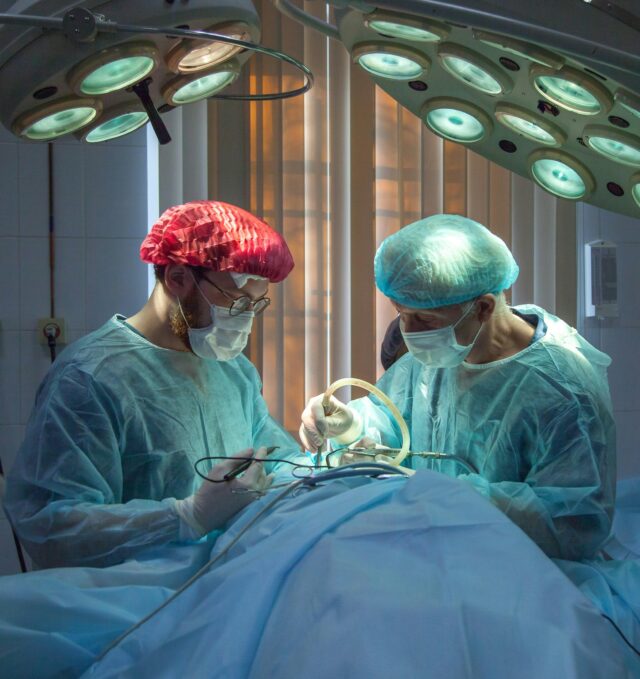Navigating intimacy after shoulder surgery can feel like uncharted territory. The physical and emotional challenges that accompany such a procedure can create uncertainty, making the prospect of rekindling that intimate connection daunting. As partners, understanding and compassion become vital as you both adjust to the changes in your body and lifestyle. With careful consideration, open communication, and a touch of creativity, it is possible to rediscover closeness and pleasure. This article aims to provide thoughtful insights and practical tips to help couples navigate the intimacy landscape after shoulder surgery, embracing both the healing process and the joy of connection.
Understanding Post-Surgery Limitations for a Smooth Recovery
Post-surgery, it’s crucial to understand the limitations your body may impose during recovery. Following shoulder surgery, especially procedures like total or reverse shoulder replacement, you may find certain movements challenging or painful. To ensure a smooth recovery while maintaining intimacy, consider the following guidelines:
- Limit Arm Movement: Avoid overhead movements initially; this can help reduce strain and discomfort.
- Modify Positions: Experiment with positions that allow you to keep your injured arm supported or close to your body.
- Engage in Communication: Discuss comfort levels and limitations with your partner to enhance mutual understanding.
As you progress through recovery, it’s important to listen to your body’s signals. While you may eventually be able to return to a more active love life, be patient and give yourself permission to take things slow. Here are a few tips to keep in mind during your healing process:
- Gradual Involvement: Start with gentle touch that doesn’t require arm movement; allow your partner to guide the intimacy.
- Use Props: Consider pillows or cushions for additional support that accommodates your comfort.
- Focus on Intimacy: Engage in activities that foster closeness without necessitating physical exertion.
Communicating with Your Partner: Setting the Right Expectations
Establishing a clear understanding of each other’s needs and boundaries is essential in nurturing intimacy, particularly after physical limitations like shoulder surgery. Begin by having an open dialog about what feels comfortable and safe for both partners. Consider discussing aspects such as:
- Physical comfort: Identify positions that alleviate strain on the healing shoulder while still allowing for closeness.
- Emotional support: Share feelings of vulnerability and reassure each other about the ongoing connection.
- Timing and patience: Acknowledge that physical intimacy may take time to adjust. Set realistic timelines for your journey together.
It’s vital to foster an environment where both partners feel heard and understood. Encourage frequent check-ins during intimacy to ensure that both of you are comfortable with the pace and level of engagement. Use gentle affirmations to maintain an emotional connection and remind each other that intimacy extends beyond physical actions, incorporating elements like:
- Quality time: Spend time together in non-sexual contexts to deepen your bond.
- Affection: Non-invasive gestures like cuddling or holding hands can be reassuring.
- Creativity: Explore new ways of expressing love that do not involve the shoulder, ensuring that both partners feel valued and connected.
Creating a Comfortable Environment for Intimacy
To foster an intimate atmosphere, begin by ensuring the environment is free from distractions. Create a cozy space where both partners feel relaxed and at ease. Consider the following elements to enhance comfort:
- Adjust the lighting to a soft glow, using lamps or candles.
- Choose comfortable bedding or seating arrangements that accommodate physical limitations.
- Play soothing music or sounds that help calm nerves and set a romantic tone.
- Make sure the room temperature is comfortable to both, keeping it warm without overheating.
It’s essential to communicate openly about any physical limitations following shoulder surgery. Engage in gentle touch and affection that celebrates your connection without pushing boundaries. Explore positions that do not strain the shoulder while still allowing for closeness. Remember to prioritize:
- Mutual consent and comfort in all activities.
- Adaptive techniques that enhance pleasure without discomfort.
- Frequent check-ins to ensure both partners feel secure and cherished.
Exploring Alternative Positions That Accommodate Healing
After shoulder surgery, exploring positions that promote comfort and accommodate healing is essential. Keeping in mind your range of motion and pain levels, consider gentle side-lying positions, which can alleviate pressure on the shoulder while allowing intimacy. You may also try modifying missionary or spooning positions, where your partner supports your upper body, giving you balance and stability. These alternatives can help maintain connection while prioritizing your recovery.
Communication with your partner is key to discovering what feels best for you. Discuss your preferences and boundaries openly, allowing for a shared experience that respects your healing process. Additionally, using pillows for support can enhance comfort and reduce strain on your shoulder. You might also explore mutual activities that require less physical engagement, enabling closeness without compromising healing. Remember, the goal is to find ways to adapt and enjoy intimacy that honors your body’s needs during recovery.
Incorporating Gentle Touch and Intimacy-Building Activities
After shoulder surgery, physical intimacy can feel challenging, but incorporating gentle touch can create profound connections without straining the healing area. Start with soft caresses to the arm or a gentle brush of fingers against the skin. These subtle gestures not only convey affection but also foster emotional intimacy. Engaging in low-pressure activities such as reading together, sharing a cozy blanket, or simply enjoying a quiet movie night can enhance feelings of closeness. Consider light massages to the uninjured areas, encouraging relaxation and connection while allowing your partner to feel cared for.
In addition, explore activities that allow for intimacy without physical strain. Holding hands during conversations can bridge emotional gaps and reinforce your bond, while sitting close together can create a comforting atmosphere. You might also think about exploring touch through playful interactions, like gentle back tickles or affectionate hair stroking, promoting connection without the need for more demanding forms of physical intimacy. Emphasizing communication about comfort levels will foster a space where both partners can feel secure and loved during the healing process.
Using Props and Support for Added Comfort
To enhance comfort during intimacy after shoulder surgery, incorporating various props can significantly support your healing journey. Pillows are a fantastic resource; they can provide needed elevation or cushioning, helping to alleviate pressure on your shoulder. Consider using a wedge pillow to maintain a comfortable angle or soft cushions to support different body positions. Additionally, blankets can help create a cozy environment, allowing for more relaxed and enjoyable moments.
Moreover, employing straps or slings for your arm can offer extra stability and security, permitting you to engage more freely without risking discomfort. Adaptive furniture, such as adjustable beds or reclining chairs, can also help you find the most comfortable positioning. Remember, communication with your partner is crucial—together, explore gentle and supportive approaches that prioritize both comfort and connection during this phase of recovery.
Timing Your Intimate Moments: Finding the Right Time to Connect
After shoulder surgery, it’s essential to give your body the time it needs to heal before resuming intimate activities. The healing process requires patience, and understanding the timeline for recovery can help in finding the right moment to reconnect with your partner. Consider the following factors to gauge your readiness:
- Consult your surgeon: Follow medical advice and ensure that any restrictions are addressed before resuming intimacy.
- Listen to your body: Pay attention to pain levels and physical comfort; only engage when you feel ready.
- Timing is key: Select moments when both you and your partner are relaxed, minimizing stress that might exacerbate discomfort.
Physical intimacy after surgery should not feel rushed; make adjustments to accommodate any limitations. There are ways to connect emotionally and physically that consider your recovery:
- Explore non-strenuous activities: Focus on cuddling or gentle touch that allows closeness without straining the shoulder.
- Communicate openly: Discuss needs and boundaries with your partner to foster understanding and intimacy, ensuring that both feel comfortable.
- Modify positions: Opt for positions that minimize pressure on the shoulder while maintaining closeness.
Focusing on Emotional Intimacy Beyond Physical Connection
Recovering from shoulder surgery may impose physical limitations that temporarily alter the dynamics of intimacy, yet it opens a unique space for emotional connection to flourish. During this period, it’s crucial for partners to engage in deep conversations that foster understanding and empathy. Sharing feelings about the recovery process can enhance mutual support, while expressing concerns or aspirations helps to maintain a profound bond. Gentle physical touch, such as holding hands or cuddling, can substitute for more intense forms of intimacy, ensuring that both partners feel cherished and connected despite physical challenges.
Additionally, exploring new ways to express affection can lead to unexpected depths of intimacy. Engaging in shared activities that don’t strain the recovering shoulder—like watching a movie together, reading aloud, or enjoying a cozy meal—can create valuable moments of closeness. Verbal affirmations of love and appreciation can also reinforce the emotional connection, reminding each other that intimacy transcends physicality. As partners navigate this journey together, they can cultivate a resilient emotional intimacy that not only strengthens their relationship but also lays a solid foundation for rekindling physical closeness when the time is right.
Gradually Reintroducing Physical Intimacy: A Step-by-Step Guide
Reintroducing physical intimacy after shoulder surgery requires patience and careful planning. Begin by assessing your comfort level and communicating openly with your partner about any concerns or limitations. Start with gentle touch, avoiding any movements that strain your shoulder. Explore positions that minimize shoulder use, such as lying side by side, which can foster closeness without requiring overhead movements. Prioritize comfort by using pillows or cushions for support, and remember that this is a gradual process. It’s vital to listen to your body and take breaks as needed.
As you feel more at ease, gradually experiment with deeper forms of intimacy while maintaining awareness of your physical capabilities. Consider the following approaches to enhance your connection:
- Engage in non-sexual intimate activities like cuddling or massage to rebuild closeness.
- Incorporate gentle stretches or movements recommended by your physical therapist to increase your range of motion.
- Discuss any sensations of pain or discomfort with your partner, adjusting as necessary to maintain a shared experience.
Continue this step-by-step approach, gradually returning to more traditional forms of intimacy as your recovery progresses and you gain confidence in your shoulder’s strength. Always consult with your healthcare team for guidance tailored to your specific situation.
Seeking Professional Guidance: When to Consult a Therapist
Undergoing shoulder surgery can significantly impact your emotional and physical well-being, leading to concerns about intimacy and connection with your partner. If you find yourself feeling uncertain or anxious about resuming intimacy, it may be beneficial to consult a therapist. A professional can help you navigate feelings of vulnerability and explore the psychological barriers that might arise post-surgery. Seeking guidance can foster a supportive environment where you can express your fears and desires, allowing for a more comfortable journey back to intimacy.
Consider reaching out to a therapist if you experience any of the following:
- Persistent anxiety: Ongoing worries about pain or limitations in movement during intimate moments.
- Emotional distress: Feelings of frustration or sadness regarding changes in your relationship dynamics.
- Communication issues: Difficulty discussing your needs or concerns with your partner, leading to misunderstandings.
- Loss of confidence: Decreased self-esteem related to body image or perceived attractiveness post-surgery.
Therapy could provide you with tools to enhance communication, improve emotional regulation, and ease the transition into a new phase of intimacy. By addressing these challenges with professional help, you can develop a deeper understanding of both personal and relational needs in the aftermath of surgery.
Celebrating Progress Together: Acknowledging Your Journey
Reconnecting with your partner after shoulder surgery can be an empowering journey, filled with a blend of challenge and discovery. As you navigate this new phase, communication and patience become your greatest allies. Initiate open discussions about each other’s feelings and desires during this period of recovery. Consider adaptations that prioritize comfort and intimacy, focusing on what feels good without overexerting yourself. Experiment with positions that accommodate your healing shoulder, such as side-by-side cuddling or gentle, face-to-face interactions that allow for closeness without strain.
Additionally, celebrate the small victories along the way. Acknowledge the moments of connection that may not resemble what was once routine but build a deeper bond as you adapt together. Discuss creative alternatives like sensual massages or shared baths, which can maintain intimacy while respecting your body’s needs. Emphasizing emotional closeness during this period not only fosters a supportive environment but also strengthens your relationship, proving that love can flourish even in times of challenge.
In Conclusion
As you embark on this journey of physical healing and emotional connection, remember that intimacy after shoulder surgery is an exploration that requires patience, understanding, and creativity. Each step you take toward comfort and confidence in your body is a step toward rekindling the closeness you cherish. Open communication with your partner and a willingness to adapt will not only nourish your relationship but also empower you as you recover. Embrace this opportunity to discover new ways to express your love, reminding yourself that the bond you share can evolve beautifully, even in the face of temporary challenges. With time, care, and mutual support, you can navigate this new chapter together.




